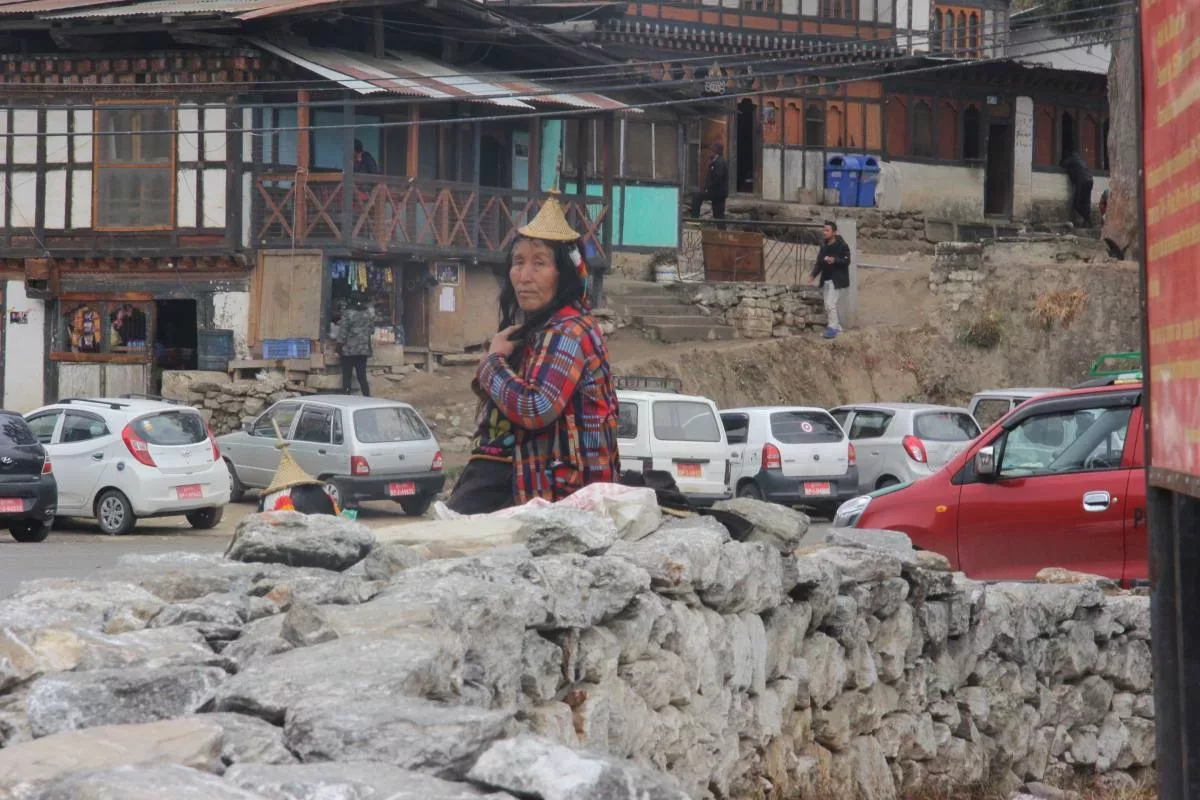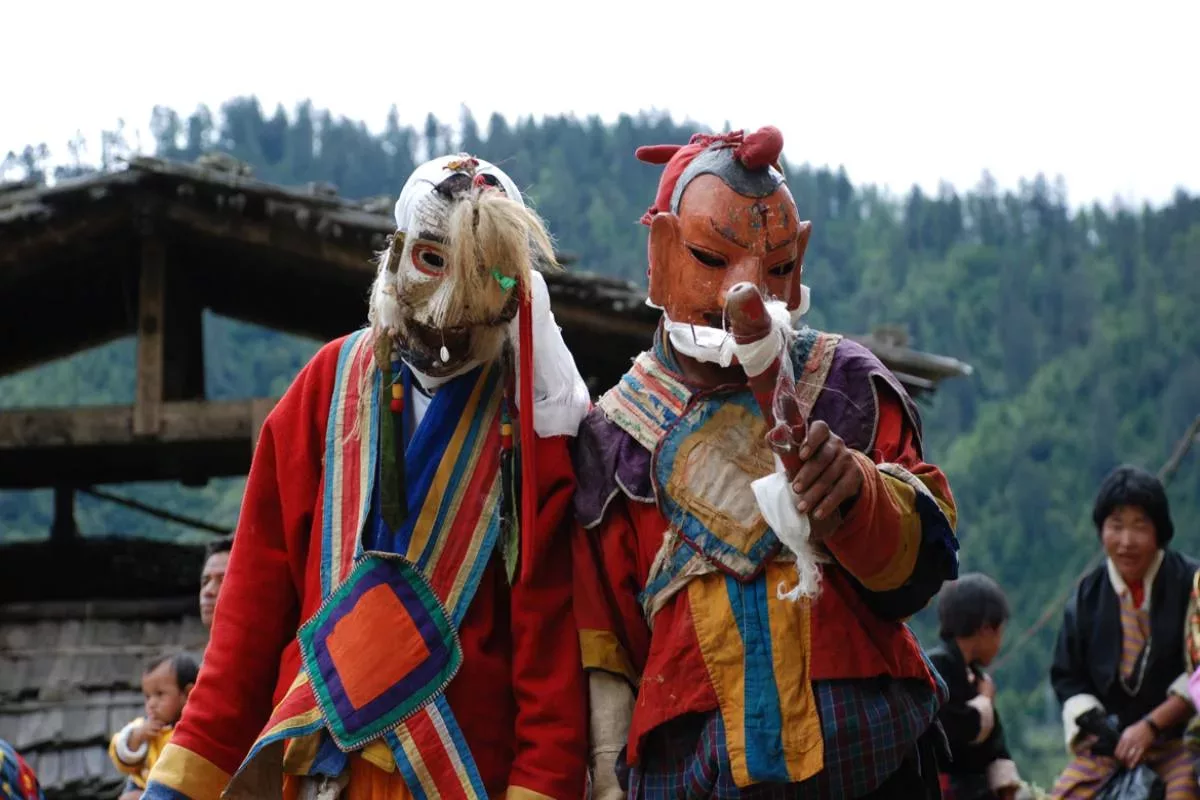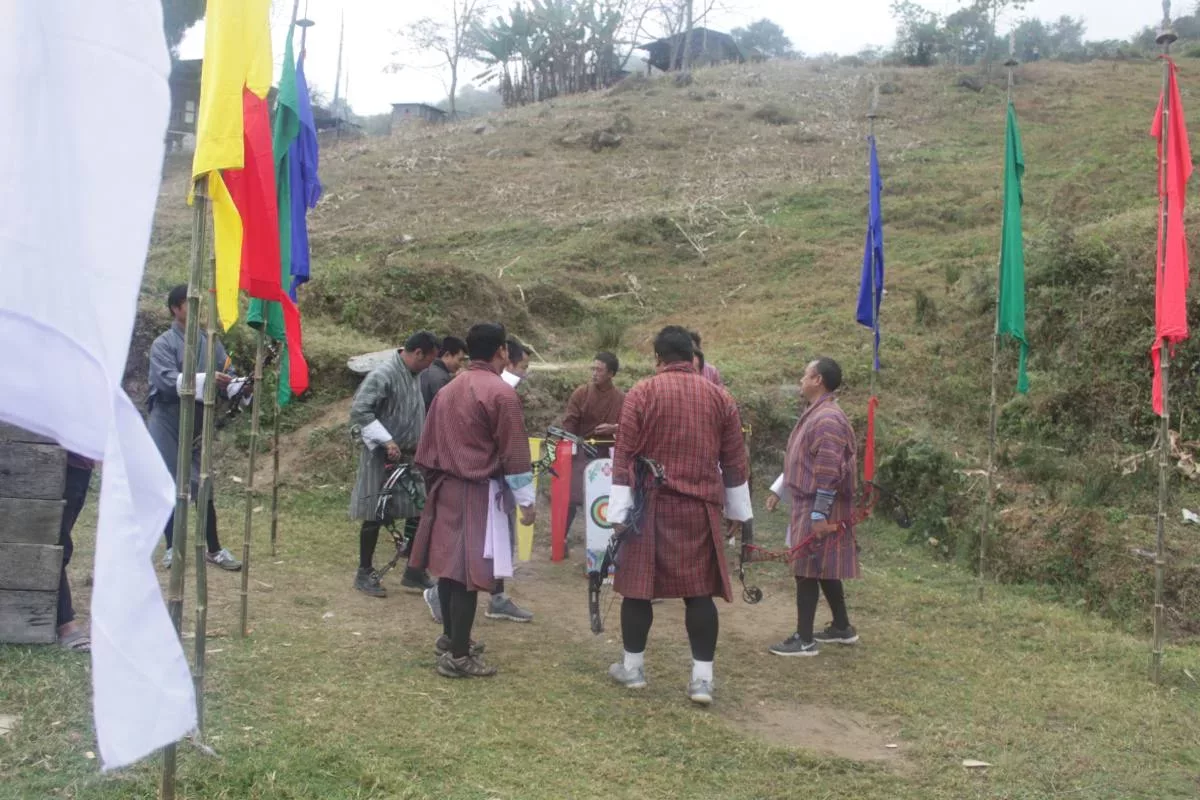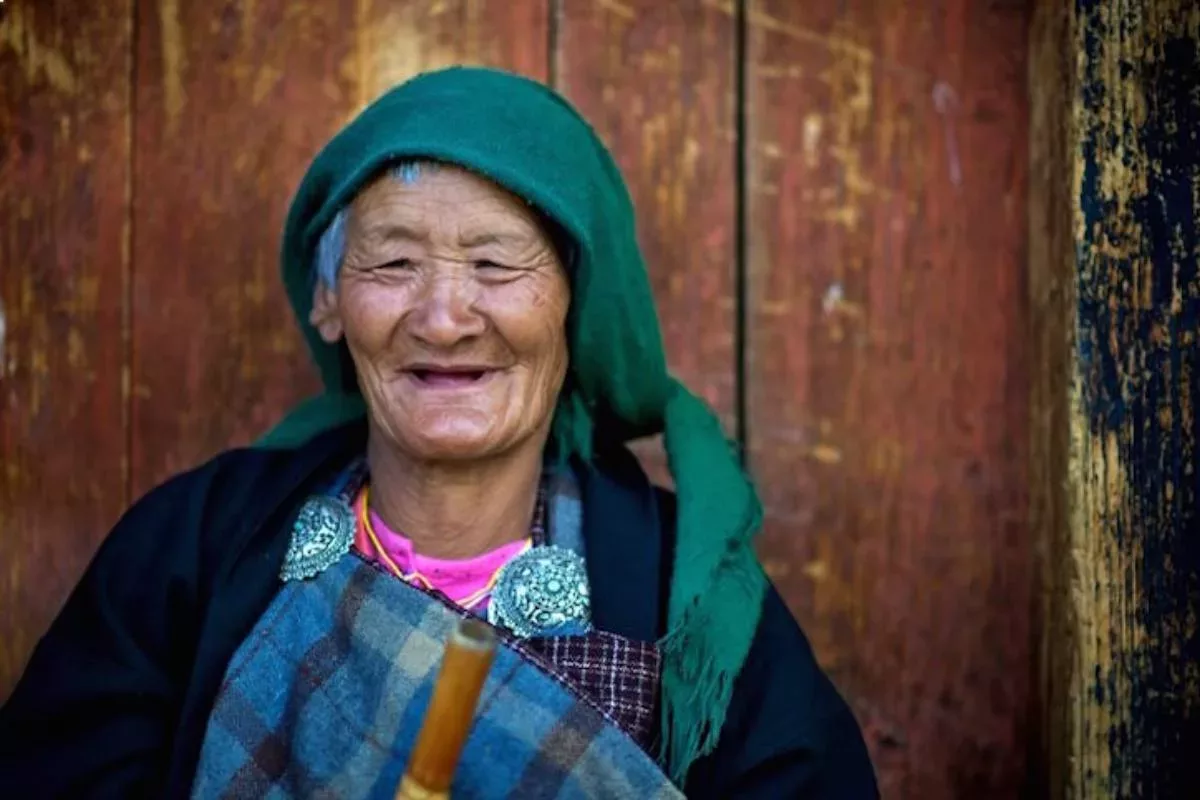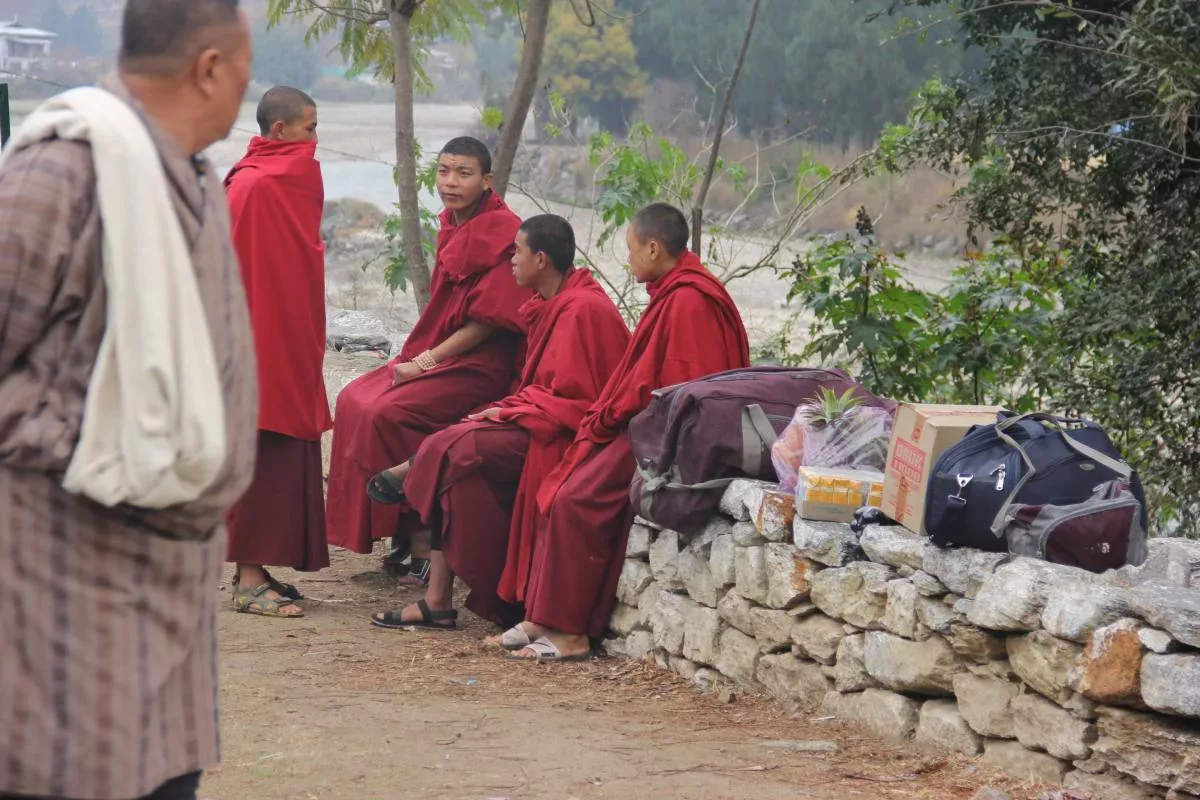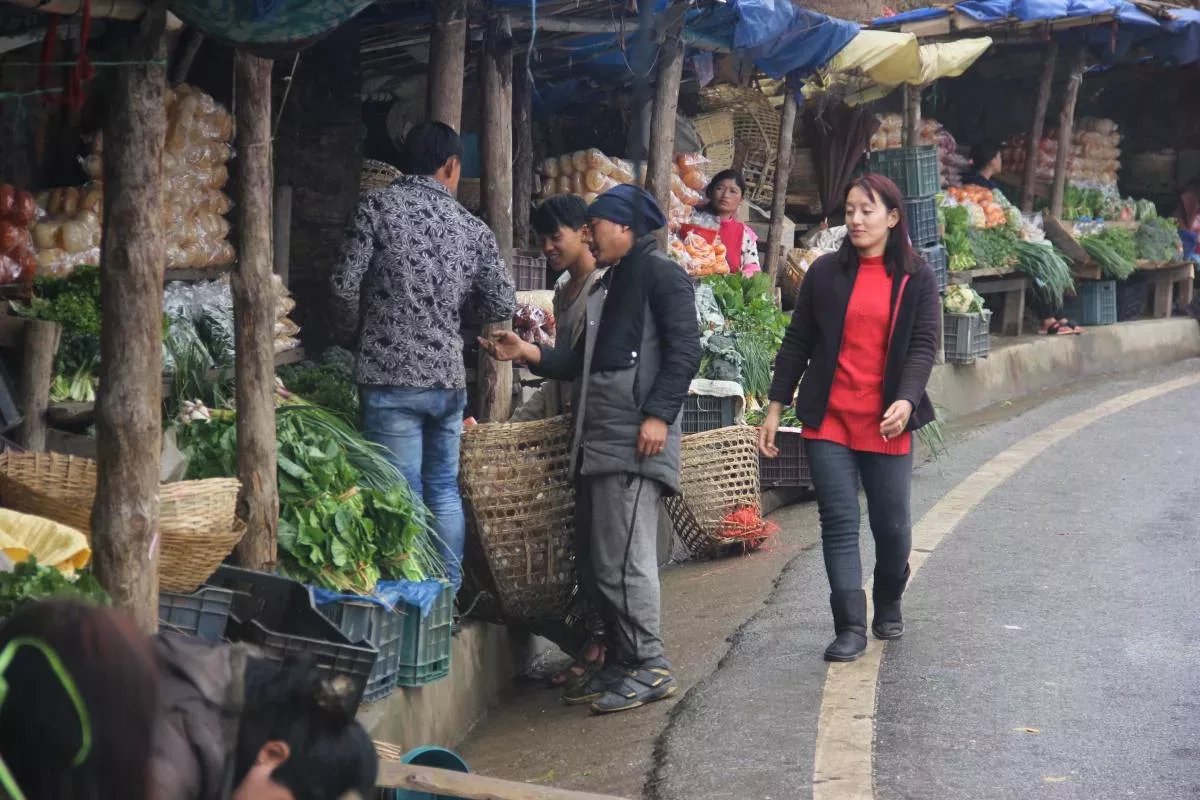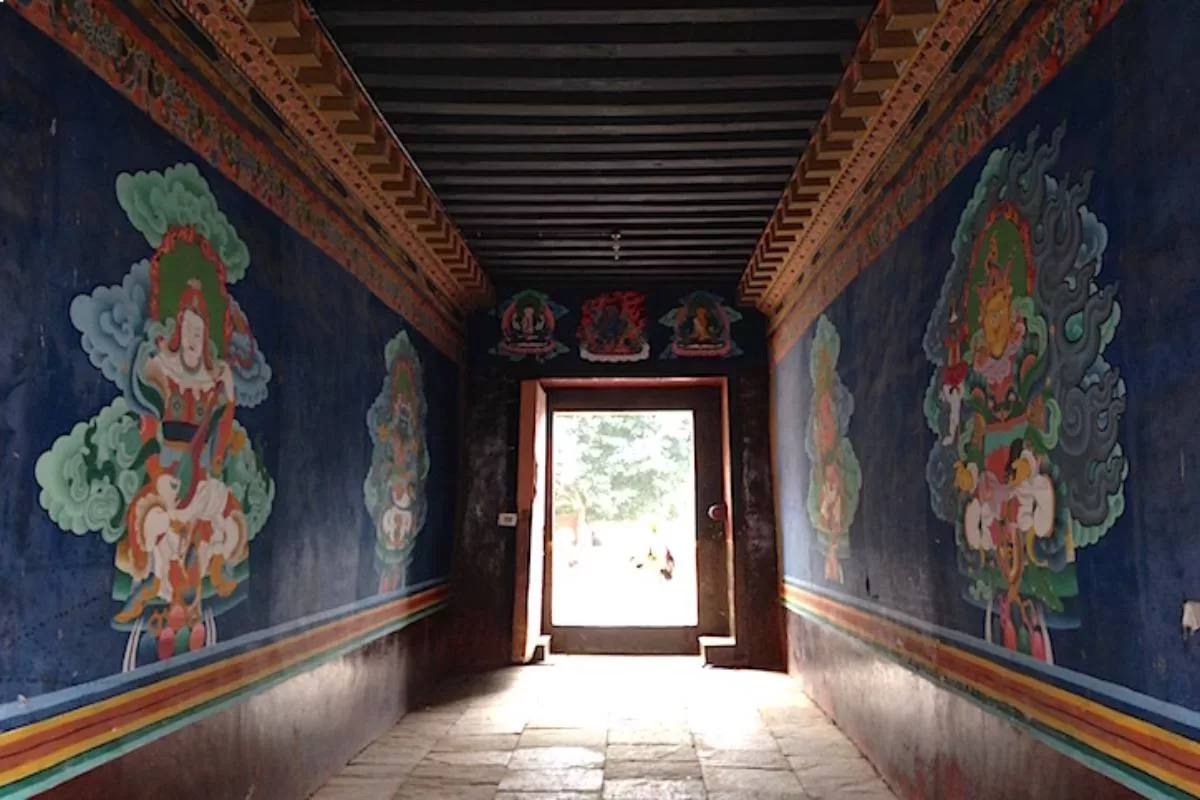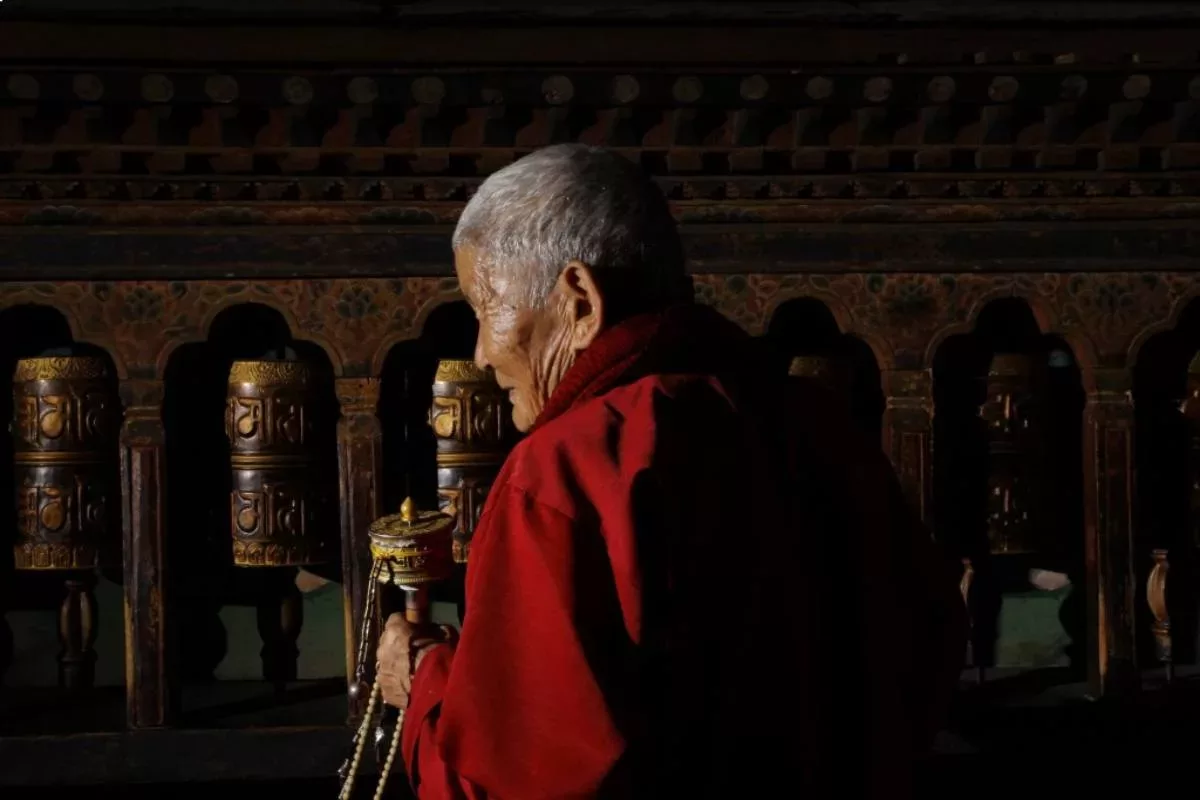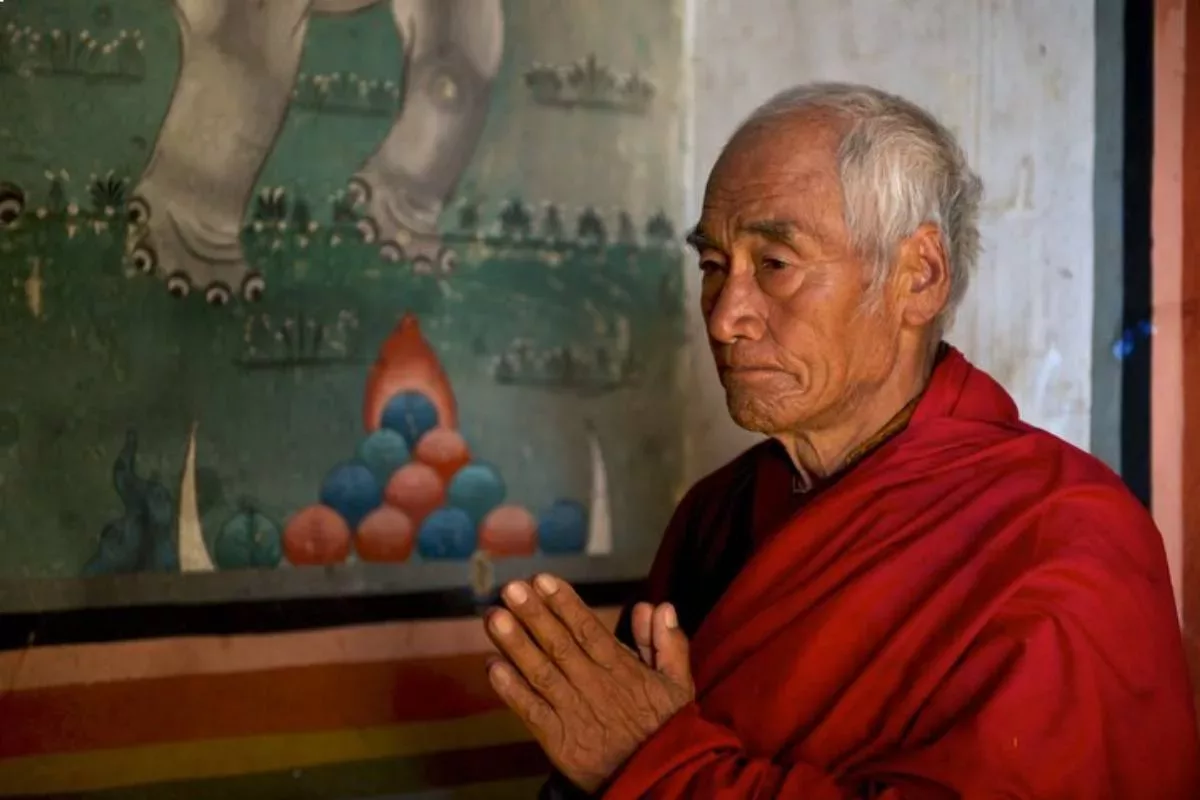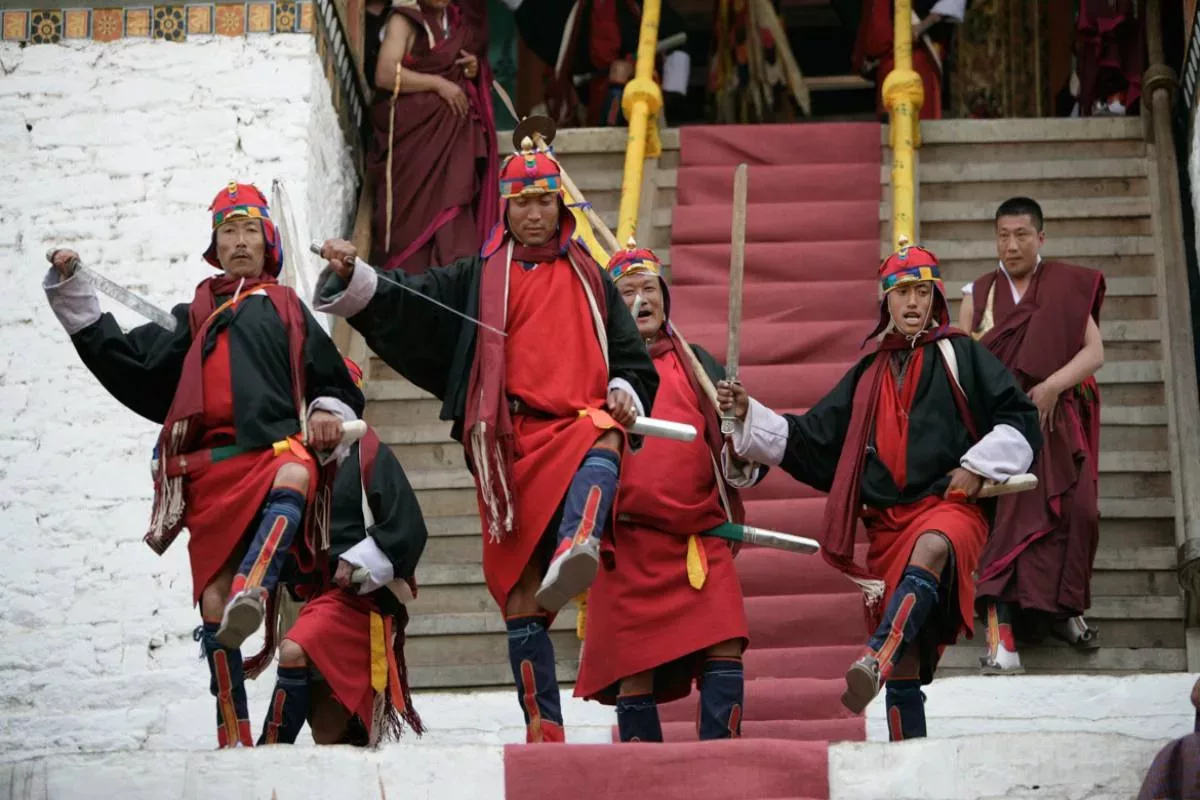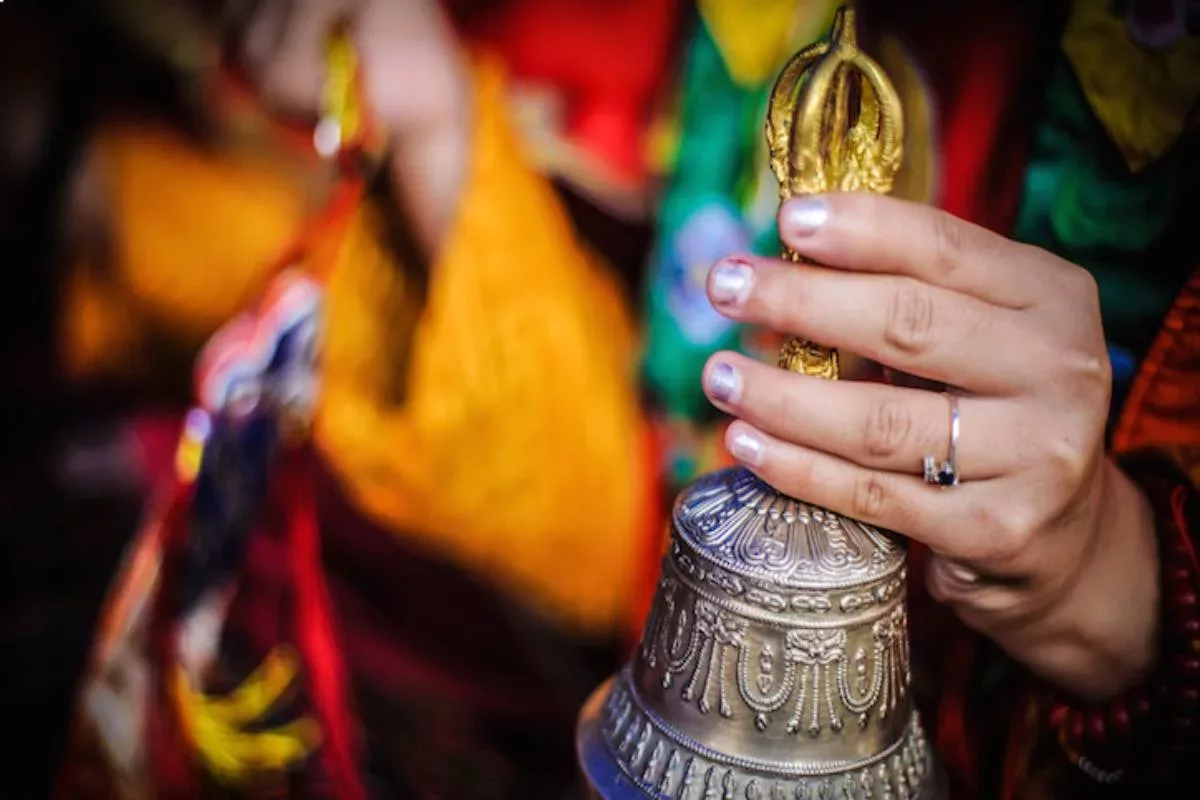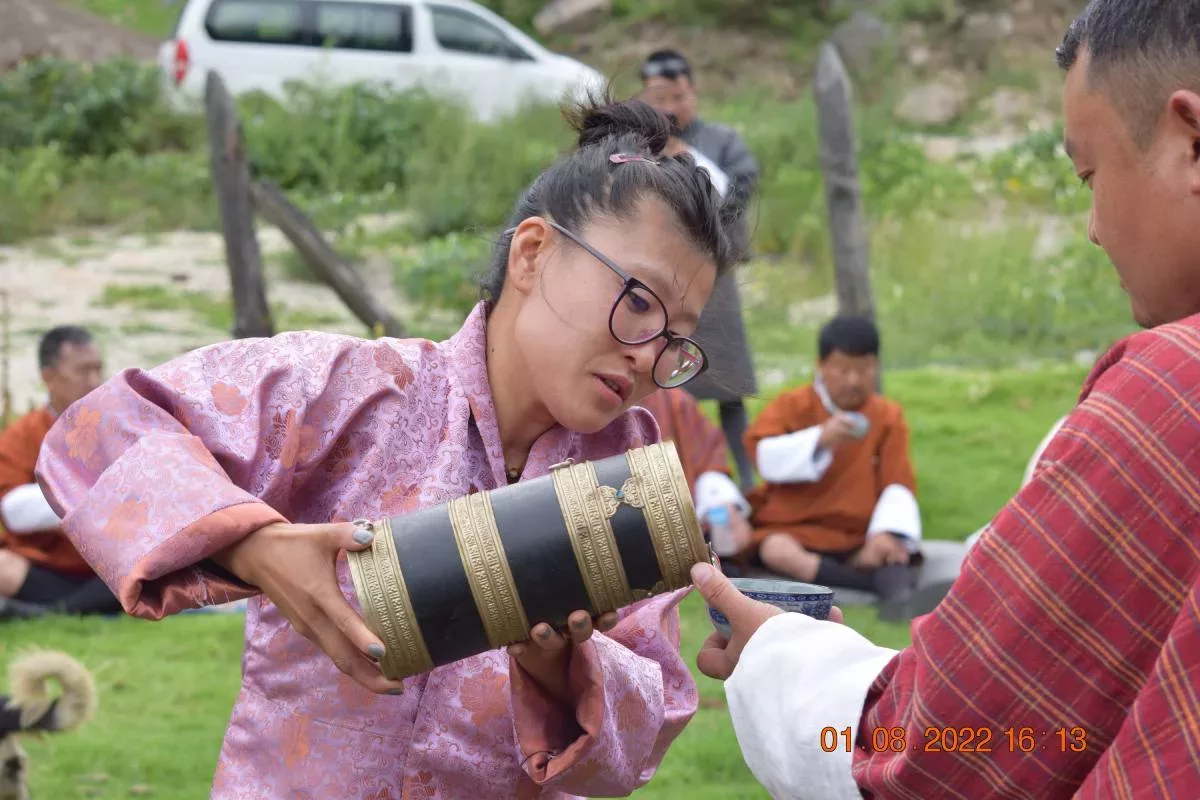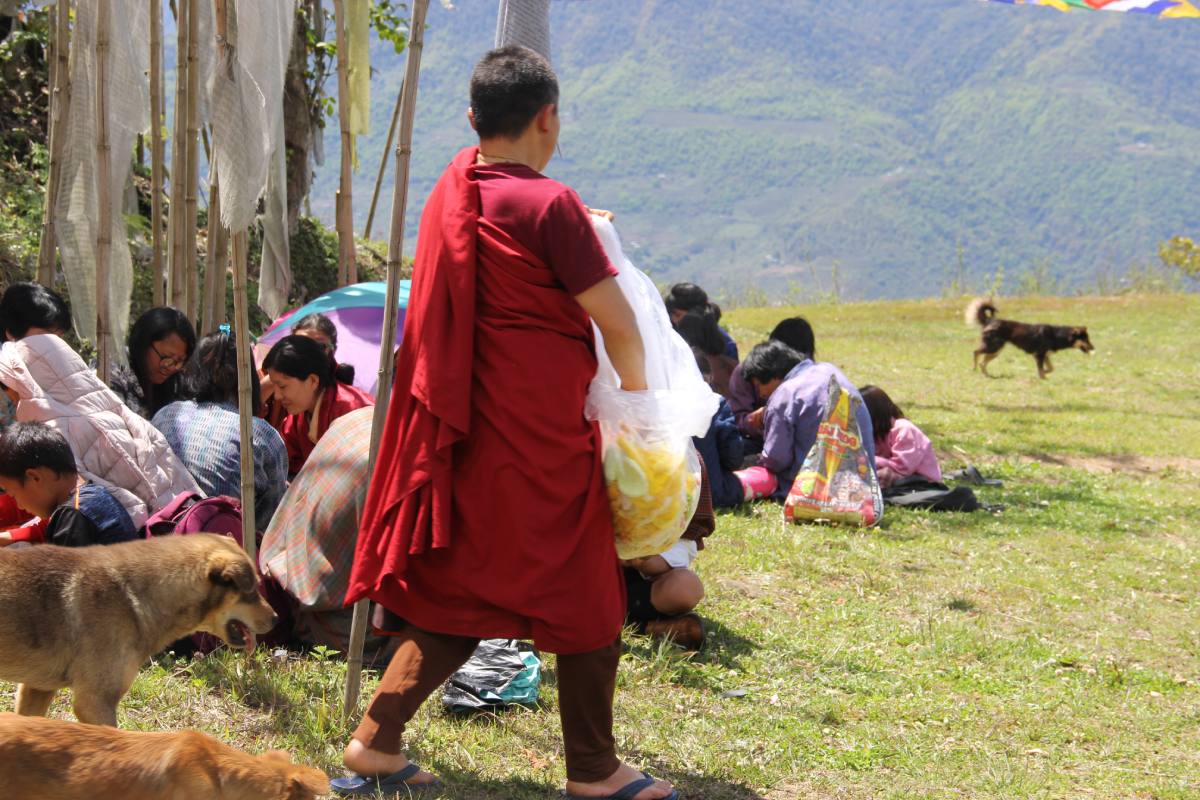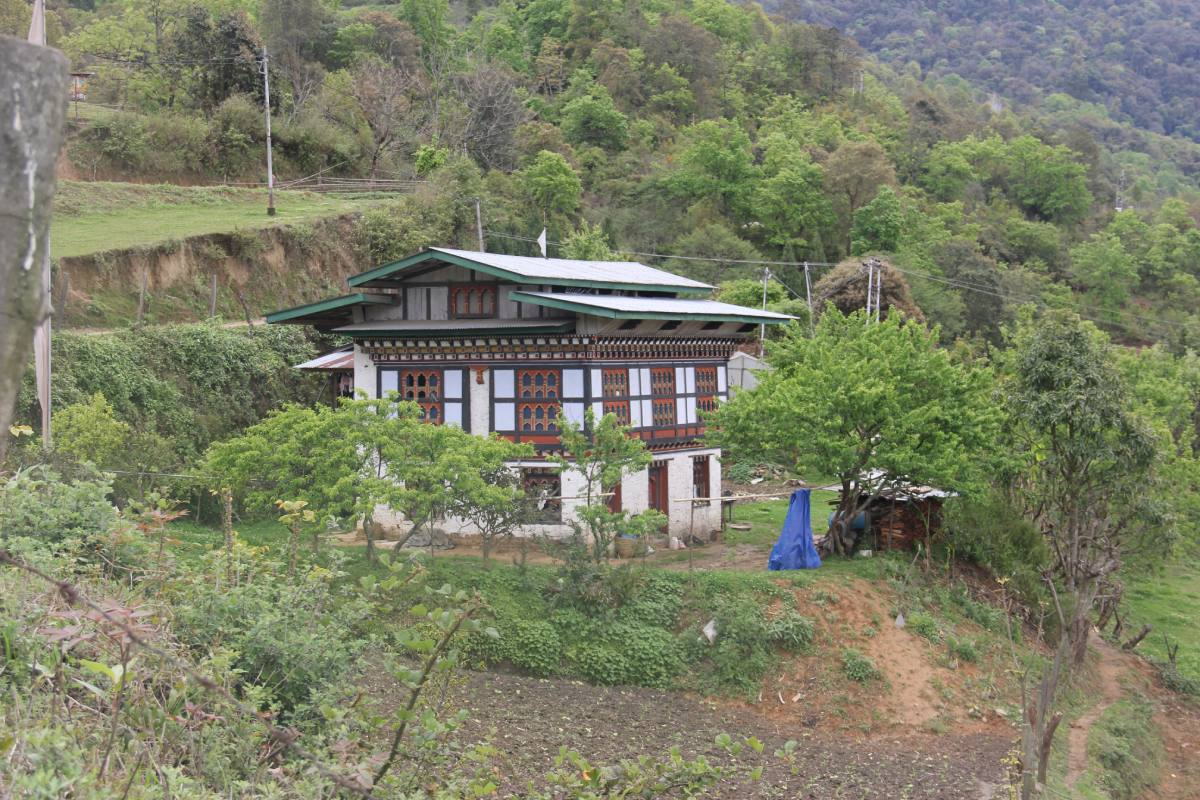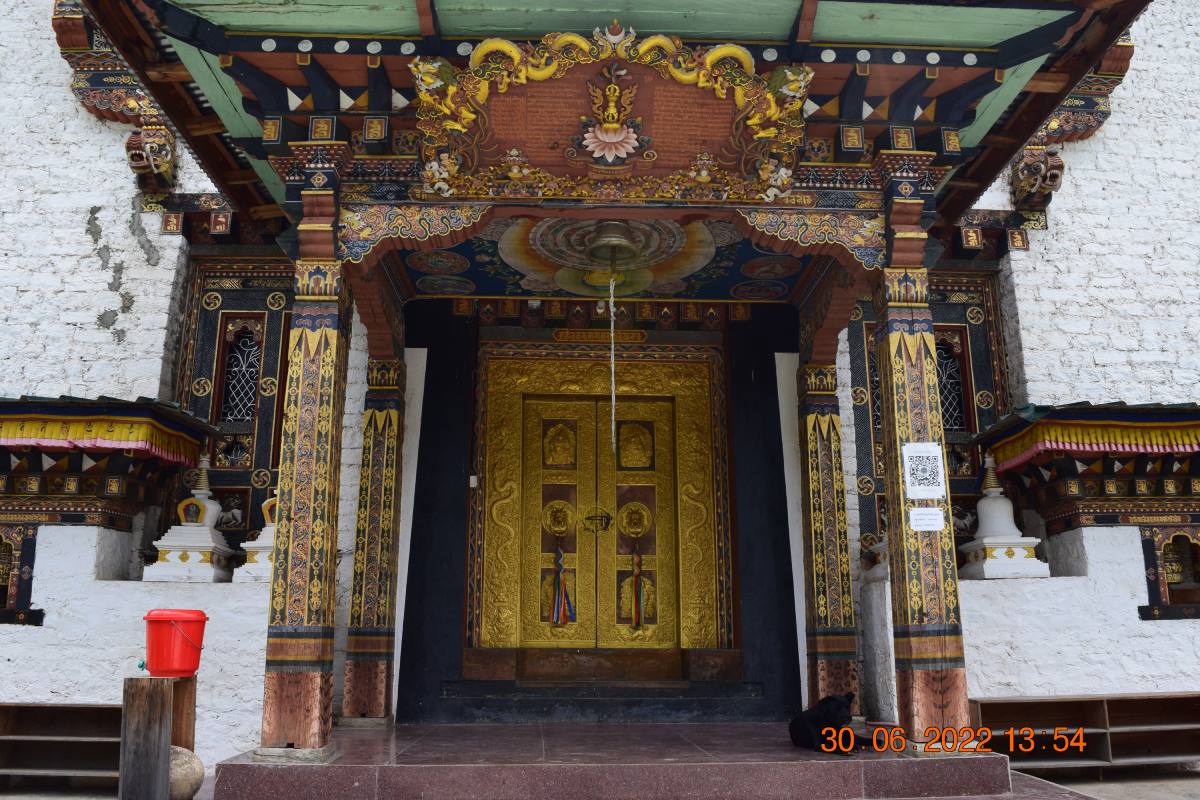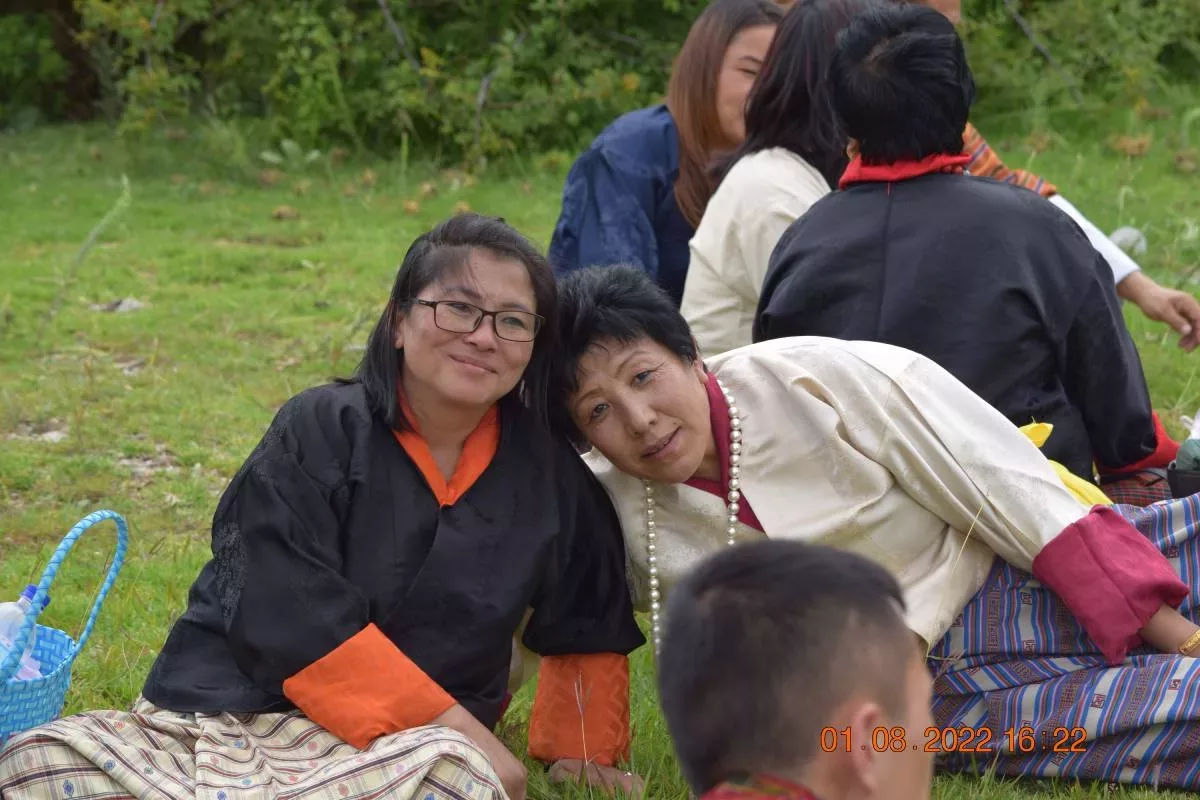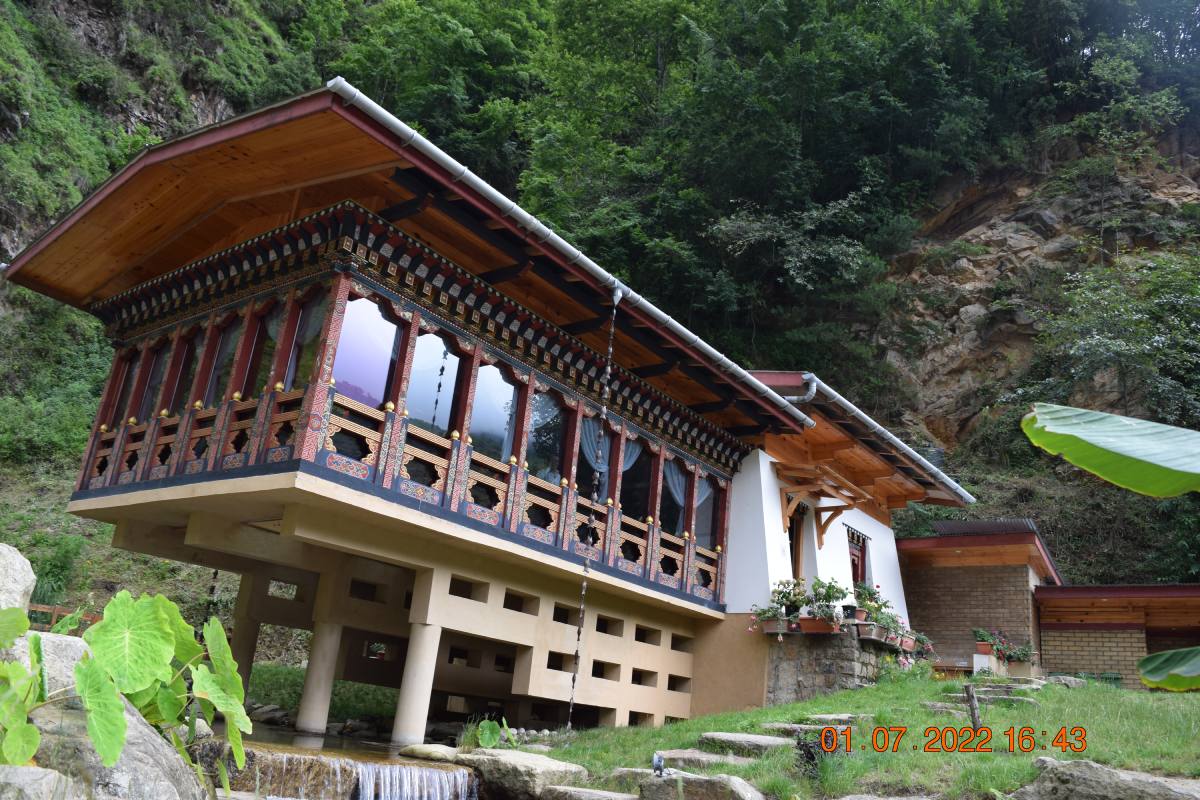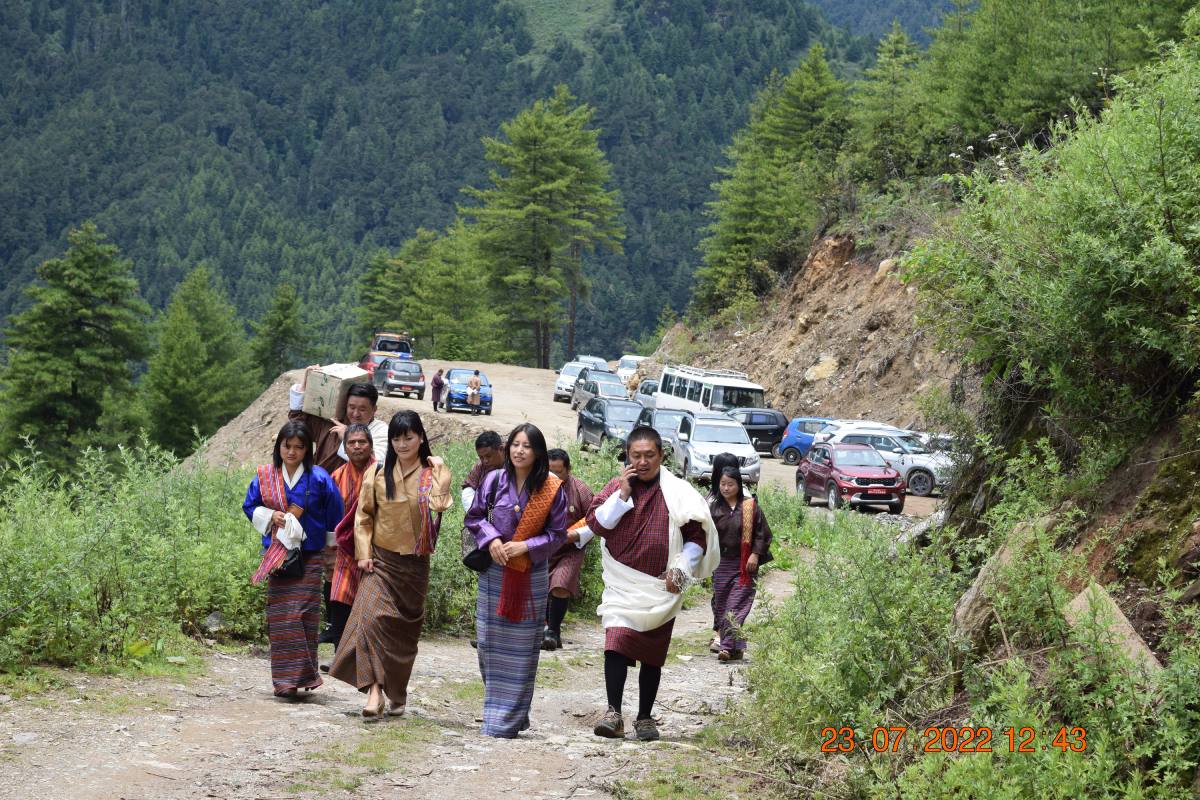Detailed Program
On a clear day, the flight to Paro is one of the most spectacular of all mountain flights. Whether flying along the Himalayan range from Kathmandu or over foothills from Kolkatta, the journey offers you wonderful views of the Himalayas and an exciting descent into the Kingdom.
On arrival at Paro airport, immigration and customs formalities and then received by our representative and transfer to the hotel.
The evening takes a stroll around the town’s main street.
Overnight at the hotel in Paro.
Places and attractions:
- Rinpung Dzong
- Drukgyel Dzong
- Taktshang
- Kyichu Lhakhang
- Kila Gompa
- Dungtse Lhakhang
- Tachog Lhakhang
- Dzongdrakha
Accommodation options:
After breakfast, visit Ta Dzong (National Museum) formerly a watchtower and now the National Museum. The museum collection includes ancient Bhutanese art and artifacts, weapons, coins, stamps, and a small natural history collection. Then walk down a hillside trail to visit Rinpung Dzong (Paro Dzong) situated at a commanding height overlooking Paro valley. Built by Shabdrung Ngawang Namgyal in 1646, this dzong now houses Paro’s monk body and the offices of the civil administration and is symbolic of the religious and secular center of all affairs of the valley.
Afternoon visit Drukgyel Dzong, the ruined fortress from where Bhutanese repelled several invasions by Tibetan armies. Then visit a traditional farmhouse which offers good insight into the lifestyle of local people.
In the evening, visit Kyichu Lhakhang, one of the oldest and most sacred shrines of the Kingdom.
Places and attractions:
- Rinpung Dzong
- Drukgyel Dzong
- Taktshang
- Kyichu Lhakhang
- Kila Gompa
- Dungtse Lhakhang
- Tachog Lhakhang
- Dzongdrakha
Accommodation options:
Overnight at the hotel in Paro.
After breakfast proceeds to Thimphu, the modern capital town of Bhutan. En route stop at Chuzom (confluence) where the Paro river joins the Thimphu river. Nearby Thimphu, visit Simtokha Dzong, the oldest fortress of the Kingdom which now houses the School for Buddhist studies. Afternoon, in Thimphu, visit King’s Memorial Chorten and Trashichhodzong, a beautiful medieval fortress/monastery. Then, visit Handicrafts Emporium, and Textile and Folk Heritage Museum followed by visiting the local market.
Overnight at the hotel in Thimphu.
Places and attractions:
- Tashichho Dzong
- Semthoka Dzong
- Dochu La Pass
- Memorial Chorten
- Changangkha Lhakhang
- Zangdopelri
- The Tallest Buddha Image
- Tango And Cheri Monasteries
- The Handicrafts Emporium
- Traditional Medicine
- Zorig Chusum Institute
- National Library
- Weekend Market
- Botanical Garden
- Thadrak Goemba
- Tashigang Goemba
- Chizhing Samtencholing Lhakhang
Accommodation options:
Morning, Thimphu sightseeing, visiting National Library, Painting School, and Traditional Medicine Institute.
After lunch, drive to Punakha, the old capital town of Bhutan. Stop en route at Dochula pass (3,050m) which heralds the most enchanting views of Bhutan.
On arrival, check into the hotel. Evening visit Punakha Dzong, the fortress of the 17th century, and later visit Khamsm Yulley Namgyal Chorten.
Overnight at the hotel in Punakha.
After breakfast drive to Gangtey via Wangduephodrang. Visit majestic Wangdue Dzong and an interesting local market. Further ahead pass through dense forests and oak, and rhododendron trees, reaching Gangtey (Phobjikha).
Evening takes a walk around Gangtey village and visit Gangtey Gompa, the only Nyingmapa monastery in this region.
Overnight at Gangtey.
Places and attractions:
- Dargay Goemba
- Gangtey Gompa
- Temple Of Sha Radap
- Gaselo & Nahee Village
- Adha And Rukha Village
- Shaa Region Of Wangdiphodrang
- Bhey Langdrag Nye
Accommodation options:
Morning explores the Phobjikha valley which is famous for Black Necked Cranes. The cranes migrate here from the Central Asiatic plateau to escape its harsh winters.
After lunch drive to Trongsa crossing 3,300m high Pele la pass. Evening visit Trongsa market.
Overnight at the lodge in Trongsa.
Places and attractions:
Accommodation options:
Morning visits Trongsa Dzong, the masterpiece of Bhutanese architecture, and see Ta Dzong, the watch tower, built to defend this Dzong and the surrounding region.
After lunch, proceed to Bumthang, the religious heartland of the nation. Evening at leisure.
Dinner and overnight at the lodge in Bumthang.
Places and attractions:
Accommodation options:
Bumthang is the general name given to the combination of four valleys – Chumey, Choekhor, Tang, and Ura with altitudes varying from 2,600m to 4,000m. It is home to many prominent Buddhist temples and monasteries. Visit Tamshing Lhakhang, the treasure house of interesting religious Buddhist paintings. Then visit Jakar Dzong, the administrative center of the valley.
Afternoon visit Kurje Lhakhang, one of the most sacred places. Later visit Jambay Lhakhang, the ancient monastery dating from the introduction of Buddhism in the country.
Evening visit local shops. Overnight at the lodge in Bumthang.
Places and attractions:
Accommodation options:
Bumthang to Ura is 48 km, about a half-hour drive. To reach here, the road climbs to amazingly open countryside, only occasionally running into the forest. Large sheep pastures line the road up to 20 km behind the southern tip of the Tang valley. The route crosses Ura la pass (3,600m) with a magnificent view of Mount. Gangkhar Puensum. Villages in Ura have clustered houses, which is quite unusual in Bhutan. Above Ura village (3,100m) is a new temple dedicated to
Guru Rinpoche. Inaugurated in 1986, it contains a huge statue of the master and remarkable paintings of the cycle of his teachings. Over the last 25 years, Ura has been transformed from a marginal community to a prosperous valley.
Overnight at Bumthang.
Places and attractions:
Accommodation options:
The morning after visiting Bumthang market, drive to Wangdue. Lunch would be served en route at one of the famous restaurants in Trongsa town.
In the evening takes a stroll around Wangdue town, and the local market, and mingle with local people.
Overnight at the hotel in Wangduephodrang.
Places and attractions:
- Dargay Goemba
- Gangtey Gompa
- Temple Of Sha Radap
- Gaselo & Nahee Village
- Adha And Rukha Village
- Shaa Region Of Wangdiphodrang
- Bhey Langdrag Nye
Accommodation options:
Morning excursion to Chimi Lhakhang, situated on a hillock in the center of the valley, is dedicated to Lama Drukpa Kuenley, who in the late 15th century used humor, songs, and outrageous behavior to dramatize his teachings and due to this also known as “Divine Madman”. This temple is also known as the temple of fertility. It is widely believed that couples who do not have children and want one if they pray at this temple are usually blessed with a child very soon.
It is about a 30-minute walk across the field from the road to the temple. The trail leads across rice fields to the tiny settlement of Pana, meaning ‘field’. It then follows a tiny stream downhill to Yoaka and across more fields before making a short climb to Chimi Lhakhang.
Afternoon drive to Paro. Overnight at the hotel in Paro.
Places and attractions:
- Rinpung Dzong
- Drukgyel Dzong
- Taktshang
- Kyichu Lhakhang
- Kila Gompa
- Dungtse Lhakhang
- Tachog Lhakhang
- Dzongdrakha
Accommodation options:
Start the day early to drive to Haa via Chele-la pass. 4 Km away at Bondey village the road to Haa diverts towards the right-hand side and the climb up towards the Chele-la pass starts. After driving through blue pine & rhododendron forest for 45 km, reach Chele-la pass ( 4200 meters).
From this point, one can have superb views of Mount. Chomolhari & Jichu Drakey. This is a very good place to walk around for a few minutes enjoying the view. Drive on to Haa, descending all the way for another 22 km (under an hour’s drive), finally reaching Haa. The Haa Dzong is presently occupied by the military, but the view from outside is stunning. After a picnic lunch visit the famous Monastery Lhakhang Karpo (White Temple) followed by a visit to Lhakhang Nagpo (Black Temple). The central shrine in Lhakhang Nagpo is said to have no difference from that of Lhasa JOWO in Tibet. The construction of the Lakhang Karpo is believed to have been assisted by the locality. As a result, the place came to be locally known as ‘Hay’ meaning’ surprise’ which later became ‘Haa’ due to the differences in
interpretations and pronunciations of different people over time. The three giant hills looming over the fringes of Haa valley were called ‘Me Rig Puen Sum’
especially after the incidence of the Lhakhang Kdarpo construction. Today the three hills are popularly known as ‘Rig Sum Goenpa’ signifying three deities Jambayang Chana Dorji and Chenrezig.
Later, other Buddhist saints like Guru Rinpoche and ‘Machi Labdorn’ came to the Jungney Drag in Haa and blessed the locality. The principal religion followed is Drukpa Kagyud. After the arrival of Shabdrung Ngawang Namgyel, the chief guardian deity of Haa became Ap
Chundu. Later in the afternoon drive to Paro, same way back. Overnight at Paro.
Places and attractions:
Accommodation options:
After breakfast transfer to the airport for the flight to the onward destination.
- Inclusion
- Exclusion
- Insurance
- Airport pick-up and drop-off by private vehicle.
- 3-star accommodation (4 & 5 stars may require an additional premium update).
- Bhutan visa fee – including all necessary processing
- Route Permit
- Three meals per day during your stay in Bhutan
- A licensed Bhutanese tour guide
- All land transportation by private vehicle
- Camping equipment and haulage for trekking tours
- Sightseeing as per itinerary
- Monuments entrance fees where applicable
- Drinking water
- All internal taxes and charges
- A sustainable development fee of $200. (This sustainable development fee goes towards free education, free healthcare, and poverty alleviation, along with the building of infrastructure.)
- Airfare & Travel Insurance
- Expenses of personal nature, Tips to guides and drivers
- Expenses occurred due to unavoidable events i.e. road wrecks, flight delays etc.
Package does not include insurance of any kinds, and that you are required to obtain separate coverage from your home country before your trip begins.

